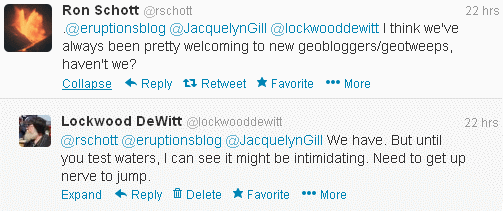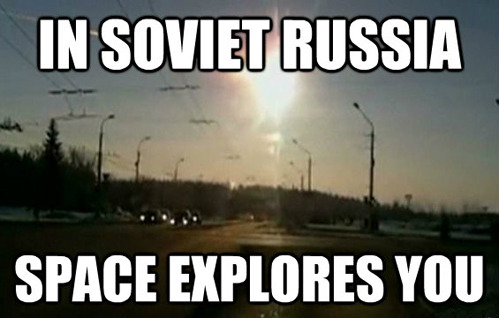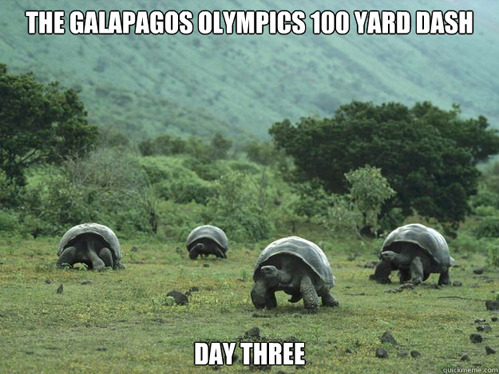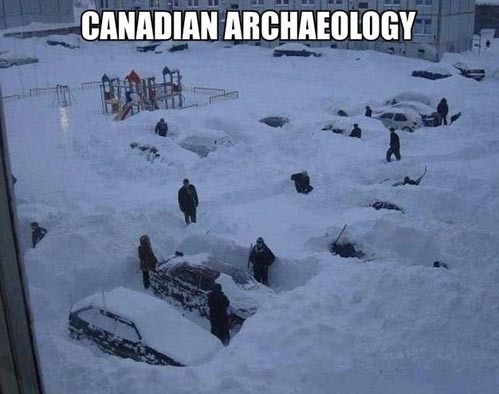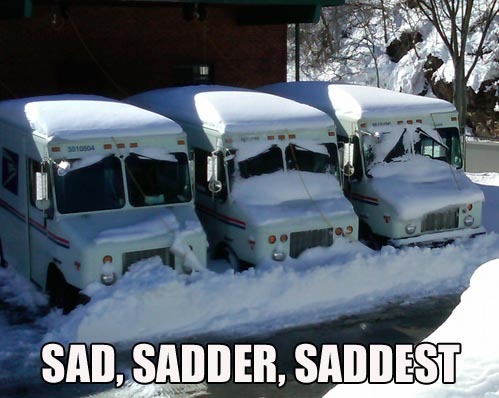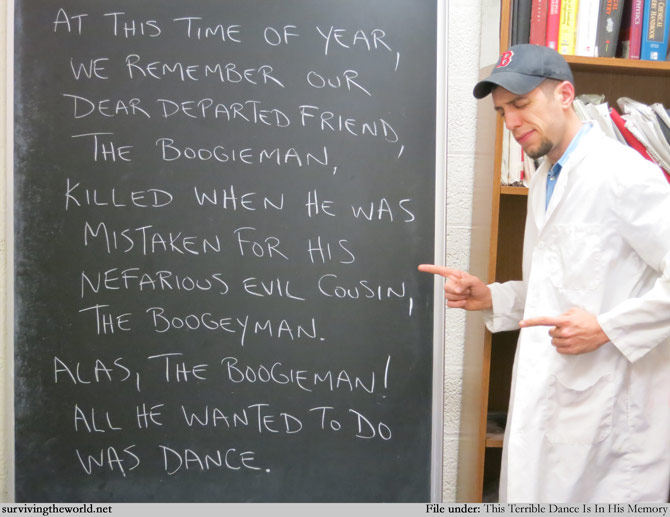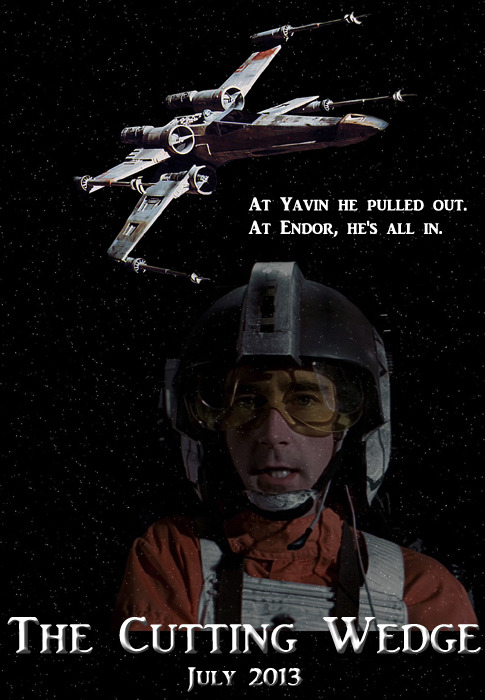Yesterday, @eruptionsblog retweeted @JacquelynGill, and I responded thusly. Erik, turn replied:
Now this was illuminating to me. I recall some years ago, maybe eight or nine, another coffee drinker at The Interzone commented that I should blog, because I was constantly making amusing snark about the Bush Administration. At the time, I was employed at OSU, so I certainly had computer access, but I hadn't really started reading blogs yet, outside of a few political blogs. Most of those had purchased or rented their own domain, and I really couldn't afford to do that. And yes, the idea of grappling with HTML was intimidating. I really expected a steep learning curve, with lots of stupid errors on my part at the outset.
It was only later that I discovered Blogspot and Wordpress (and there are others, too) that provide free hosting, within limits. At that point, I was no longer at OSU, but I had inherited my own laptop from my brother, and Interzone had wifi, so I decided to jump in. I had started reading more blogs in the previous months, and it looked like fun. Not only that, I had a growing awareness of others' interests in blogging about geology, and hoped eventually to be able to make some small contribution to that community.
So on May 11, 2008, I registered a blog name with Blogspot, and posted an introduction. Immediately afterward, I started composing a piece on the actual idea that had inspired me to start, which, oddly, was on a math trick I had discovered: a way to determine whether a number is divisible by 11. You can see in those two posts that I could be awkward, long-winded, and funny all at the same time. See, in particular, the disclaimer at the end of the second post.
I actually ended up doing five posts, just that first day. The one on why I decided to call the blog "Outside the Interzone" may be of interest, to those who don't know. As I reread that, I can see I was still feeling awkward in the medium, and I was struggling to find what I now know as "my voice." But that's okay... I can also see (and vividly recall) that I was having fun. I expected few if any visitors, but having a forum to express myself publicly, and others could read or ignore as they chose, was enthralling. I was hooked from day one. And I hadn't even touched geology yet. Though my first post on the 12th was not tagged with the Geology Label, it clearly shows I was thinking about geologic resources. And my first full-on geology post (also the first use of the Volcanoes label) was the following day.
That first week alone, I posted here 28 times. There have been weeks since when I posted more, but not many. Clearly, I jumped in with both feet, and had no shortage of things to write about. Some posts are short, maybe just to share a fun picture, others are longer, and meant to convey some convoluted thinking and ideas. The medium offered me not only a chance to share my stuff publicly, but in what ever form and format I chose.
As far as choosing a platform, I went with Blogspot, because I had a Gmail account already, and that made sign-up easy. But I've worked on Wordpress blogs as well, and find them nearly as intuitive to use in compose mode. If you already know HTML, you're ready to go. I didn't (and still don't, really), but the interface takes care of the code-writing for you. I have learned some tricks over the years, some on my own, and some when I asked for help (Yes, you're allowed to do that.).
As @rschott pointed out,
The geoblogging community loves new members. It's kind of traditional to stop by and give a warm "Howdy neighbor!" to newbies when we find them, and I suspect that's likely true of other disciplines as well.
I've already addressed the above sentiment in passing, talking about my own experience getting started. I commented further, in the conversation yesterday, that it's hard to see, before you start, that blogging takes exactly the amount of time you want it to. Found a cool image, post or site you want to pass along? Type a sentence, load the picture or link, come up with some simple title (I often go with puns, which can lead to problems later, trying to track down an older post, but it's fun for me, and that's the whole point), type it in, and hit "publish." Blam. One-minute blog post. Come across a really terrible bit of journalism you want to spend a couple hours going through with a fine-tooth comb and ripping to shreds? Have a couple hours to spare now? Do it. Have a couple hours to spare later? Do it then. If you have time when you won't be connected, make a text copy to save to your hard drive, write a text copy of your critque in any editor, then copy and paste it when you're connected again. Add any associated links and/or associated graphics, and there's another "quick" post. I've actually done that a number times- I don't have internet at home, for the most part, and that's probably a good thing.
So the effort and time that go into blogging, as I said above, is exactly what you want it to be. Tumblrs are another increasingly popular micro-blogging platform, that is, they tend to be single images or video clips with a short caption, and nothing else. I can't imagine most of those take more than a minute per post (Fair disclosure: I read a fair number of Tumblrs, but I haven't used the platform myself, other than as a consumer).
So whether you use Twitter, long-form blogging, or a Tumblr style format, is entirely up to you. And there is absolutely no reason you can't work on multiple platforms. I know plenty of people who use two of the above, and a few who use all three.
Now while it may seem as if I'm focused on the geoblogosphere on this topic, I'm merely emphasizing that because that's the community with which I'm familiar and can draw from for examples. I'm sure there are similar communities and experiences for every discipline and human endeavor: supportive people sharing similar interests, passions, and who feel strongly about the importance and the need to share that area with others. This post is just my attempt to encourage you, if you aren't active in social media, to set your worries aside and just jump in. Give it a try. If you're truly unhappy with the results, you can delete it. In blogging, you can leave posts saved but unpublished, or schedule them for a future date and time. So if you have cold feet, you can write up your first post (or first few posts), show them to someone you trust, or come back to proofread and edit with fresh eyes. I give myself permission to edit out typos and grammatical errors any time, if they bug me enough. Factual errors, I prefer to strike out, then add a correction after. This acknowledges that yes, I said that, and your memory isn't playing tricks, but it's wrong and here's what I now think is right. But the point is, you get to make your own decisions.
And that, after the strictures of trying to conform to others' expectations of how you "should" write, is an enormously liberating and rewarding experience.
I haven't finished everything I want to say on this topic, but the post is long enough, and I'll come back and finish up with some comments on things that, in my experience, have made me and my readers happy, and perhaps increased my readership.
Is This Your Hat?
11 years ago

